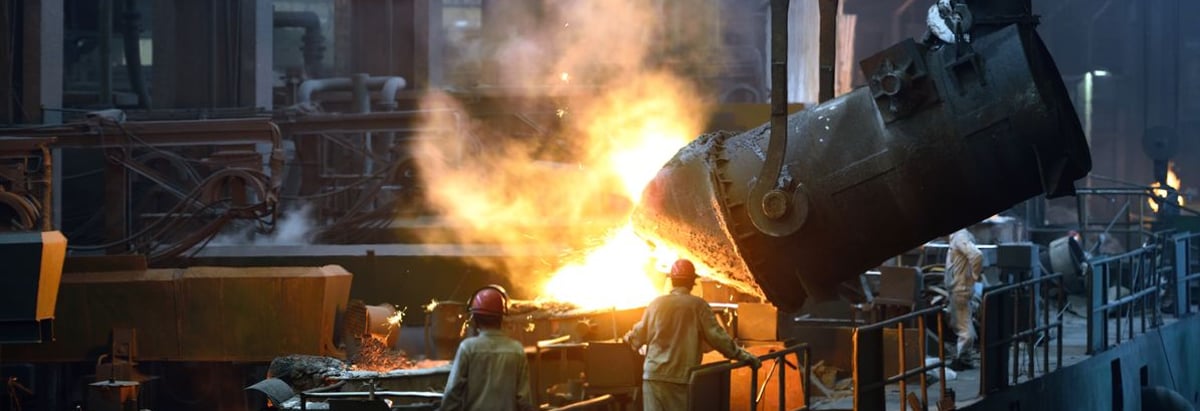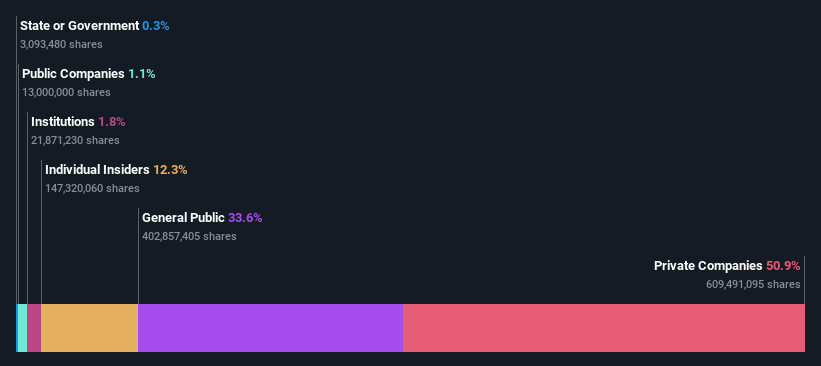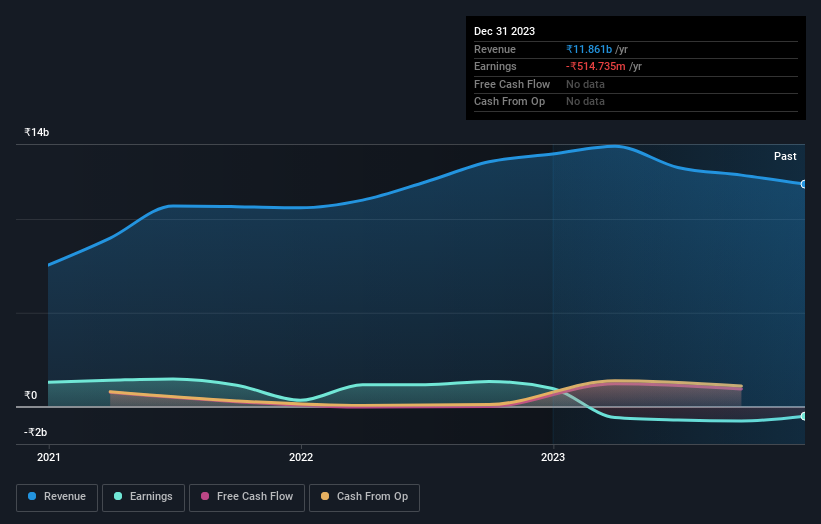- India
- /
- Metals and Mining
- /
- NSEI:STEELXIND
Private companies invested in Steel Exchange India Limited (NSE:STEELXIND) copped the brunt of last week's ₹2.1b market cap decline

Key Insights
- Significant control over Steel Exchange India by private companies implies that the general public has more power to influence management and governance-related decisions
- A total of 5 investors have a majority stake in the company with 51% ownership
- Insiders own 12% of Steel Exchange India
A look at the shareholders of Steel Exchange India Limited (NSE:STEELXIND) can tell us which group is most powerful. With 51% stake, private companies possess the maximum shares in the company. In other words, the group stands to gain the most (or lose the most) from their investment into the company.
And following last week's 12% decline in share price, private companies suffered the most losses.
Let's take a closer look to see what the different types of shareholders can tell us about Steel Exchange India.
Check out our latest analysis for Steel Exchange India

What Does The Institutional Ownership Tell Us About Steel Exchange India?
Many institutions measure their performance against an index that approximates the local market. So they usually pay more attention to companies that are included in major indices.
Since institutions own only a small portion of Steel Exchange India, many may not have spent much time considering the stock. But it's clear that some have; and they liked it enough to buy in. So if the company itself can improve over time, we may well see more institutional buyers in the future. When multiple institutional investors want to buy shares, we often see a rising share price. The past revenue trajectory (shown below) can be an indication of future growth, but there are no guarantees.

Hedge funds don't have many shares in Steel Exchange India. Our data shows that Vizag Profiles Pvt. Ltd. is the largest shareholder with 21% of shares outstanding. Umashiv Garments Private Limited is the second largest shareholder owning 19% of common stock, and Vishwa Samudra Holdings Private Limited holds about 5.1% of the company stock. Furthermore, CEO Bandi Kumar is the owner of 0.5% of the company's shares.
Our research also brought to light the fact that roughly 51% of the company is controlled by the top 5 shareholders suggesting that these owners wield significant influence on the business.
While it makes sense to study institutional ownership data for a company, it also makes sense to study analyst sentiments to know which way the wind is blowing. As far as we can tell there isn't analyst coverage of the company, so it is probably flying under the radar.
Insider Ownership Of Steel Exchange India
The definition of an insider can differ slightly between different countries, but members of the board of directors always count. Company management run the business, but the CEO will answer to the board, even if he or she is a member of it.
Most consider insider ownership a positive because it can indicate the board is well aligned with other shareholders. However, on some occasions too much power is concentrated within this group.
Our information suggests that insiders maintain a significant holding in Steel Exchange India Limited. It has a market capitalization of just ₹16b, and insiders have ₹1.9b worth of shares in their own names. We would say this shows alignment with shareholders, but it is worth noting that the company is still quite small; some insiders may have founded the business. You can click here to see if those insiders have been buying or selling.
General Public Ownership
The general public, who are usually individual investors, hold a 34% stake in Steel Exchange India. While this group can't necessarily call the shots, it can certainly have a real influence on how the company is run.
Private Company Ownership
We can see that Private Companies own 51%, of the shares on issue. It might be worth looking deeper into this. If related parties, such as insiders, have an interest in one of these private companies, that should be disclosed in the annual report. Private companies may also have a strategic interest in the company.
Next Steps:
I find it very interesting to look at who exactly owns a company. But to truly gain insight, we need to consider other information, too. Take risks for example - Steel Exchange India has 2 warning signs (and 1 which is potentially serious) we think you should know about.
Of course, you might find a fantastic investment by looking elsewhere. So take a peek at this free list of interesting companies.
NB: Figures in this article are calculated using data from the last twelve months, which refer to the 12-month period ending on the last date of the month the financial statement is dated. This may not be consistent with full year annual report figures.
New: Manage All Your Stock Portfolios in One Place
We've created the ultimate portfolio companion for stock investors, and it's free.
• Connect an unlimited number of Portfolios and see your total in one currency
• Be alerted to new Warning Signs or Risks via email or mobile
• Track the Fair Value of your stocks
Have feedback on this article? Concerned about the content? Get in touch with us directly. Alternatively, email editorial-team (at) simplywallst.com.
This article by Simply Wall St is general in nature. We provide commentary based on historical data and analyst forecasts only using an unbiased methodology and our articles are not intended to be financial advice. It does not constitute a recommendation to buy or sell any stock, and does not take account of your objectives, or your financial situation. We aim to bring you long-term focused analysis driven by fundamental data. Note that our analysis may not factor in the latest price-sensitive company announcements or qualitative material. Simply Wall St has no position in any stocks mentioned.
About NSEI:STEELXIND
Steel Exchange India
Engages in the manufacture and sale of steel products under the SIMHADRI TMT brand name in India.
Solid track record with adequate balance sheet.
Similar Companies
Market Insights
Community Narratives



